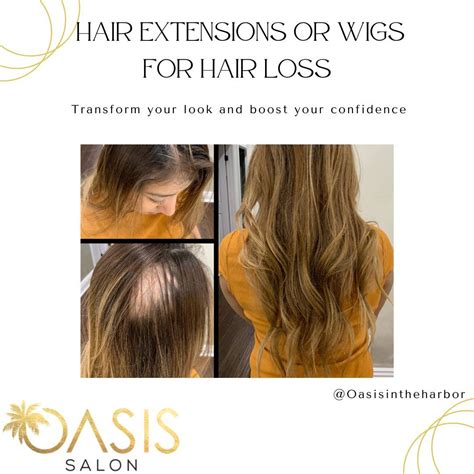Wigs and hair pieces have become increasingly popular over the past few years, as more and more people are discovering the versatility and convenience of these hair enhancements. Whether you’re looking to temporarily change up your look, experiment with different styles, or cover up hair loss or thinning, wigs and hair pieces offer a wide range of options to suit your needs.

The Benefits of Wigs and Hair Pieces
These hair enhancements come with numerous benefits, including:
- Instant Style Change: Wigs allow you to transform your look in an instant, allowing you to experiment with different hair colors, styles, and lengths without making a permanent commitment.
- Versatility: Wigs and hair pieces can be styled, cut, and colored just like natural hair, providing you with endless customization options.
- Confidence Boost: For those experiencing hair loss or thinning, wigs and hair pieces can offer a sense of confidence and self-acceptance by restoring a full head of hair.
- Protection: Wigs can protect your natural hair from heat styling, chemical treatments, and environmental factors, promoting hair health and reducing damage.
Types of Wigs and Hair Pieces
There are different types of wigs and hair pieces available, each with its unique advantages and disadvantages:
| Type | Description |
|---|---|
| Lace Front Wigs | Lace wigs offer a natural-looking hairline that is difficult to detect from your own hair, making them a popular choice for those looking for a more realistic appearance. |
| Full Lace Wigs | Full lace wigs are made entirely of lace, which is breathable and comfortable to wear, making them a good option for those with sensitive scalps. |
| Synthetic Wigs | Synthetic wigs are made from artificial fibers, making them more affordable and durable than human hair wigs. |
| Human Hair Wigs | Human hair wigs are made from real human hair, providing a natural feel and appearance. |
| Hair Toppers | Hair toppers are smaller hair pieces that are designed to conceal thinning areas on the crown of the head. |
Pain Points Addressed by Wigs and Hair Pieces
Wigs and hair pieces address several common pain points experienced by individuals:
- Hair Thinning and Loss: Wigs and hair pieces can conceal hair thinning or loss due to genetic factors, aging, medical conditions, or environmental stressors.
- Lack of Styling Options: Wigs and hair pieces allow individuals to explore different hair styles without damaging their natural hair.
- Low Confidence: For those who are self-conscious about their hair, wigs and hair pieces can provide a confidence boost by improving their appearance.
- Time Constraints: Wigs and hair pieces offer a quick and easy solution for those who do not have time to style their hair daily.
Motivations for Using Wigs and Hair Pieces
Individuals are motivated to use wigs and hair pieces for various reasons:
- Fashion and Style: Wigs and hair pieces allow for experimentation with different hair styles, colors, and lengths.
- Special Occasions: Wigs and hair pieces are popular for special occasions such as weddings, proms, and parties.
- Medical Reasons: Wigs and hair pieces are often used to conceal hair loss due to medical conditions.
- Hair Health: Wigs and hair pieces can protect natural hair from damage caused by heat styling or chemical treatments.
Common Mistakes to Avoid
To fully enjoy the benefits of wigs and hair pieces, it is important to avoid common mistakes:
- Choosing the Wrong Wig: A wig that does not match your natural hair color, skin tone, or head shape can look unnatural.
- Over-Styling: Excessive styling or using too many products can damage the wig or hair piece.
- Improper Care: Wigs and hair pieces require regular cleaning and maintenance to keep them in optimal condition.
- Wearing the Wig for Too Long: Avoid wearing the wig for prolonged periods to prevent irritation or damage to your natural hair.
FAQs
Q: How often should I wash my wig?
A: Wash your wig every 4-6 wears, depending on your usage and styling.
Q: Can I style my wig with heat tools?
A: It is best to consult the wig manufacturer’s instructions before using heat tools. Some wigs can handle heat, while others may be damaged.
Q: How long do wigs and hair pieces last?
A: The lifespan of a wig or hair piece depends on the type of materials used and the care it receives. Human hair wigs typically last longer than synthetic wigs, with an average lifespan of 6-12 months.
Q: Am I supposed to glue wigs on?
A: Whether or not to glue a wig depends on your personal preference. Glue can provide extra security and a longer-lasting style.
Q: Can I use leave-in conditioner on wigs?
A: Yes, using leave-in conditioner on wigs can help prevent tangles and keep the hair looking healthy and hydrated.
Q: How do I prevent my wig from slipping?
A: You can prevent wig slippage by using wig grips, double-sided tape, or an adjustable wig cap.
Q: Can I sleep in a wig?
A: It is not recommended to sleep in a wig as it can cause friction and damage to both the wig and your natural hair.
Q: How do I find a wig that matches my hair color?
A: The best way to find a wig that matches your hair color is to take a sample of your hair to the store or consult with a professional hairstylist.
Conclusion
Wigs and hair pieces have become an increasingly popular way to enhance hair appearance, boost confidence, and explore different hair styles. With the wide range of options available, there is a wig or hair piece to suit every individual’s needs. Whether you’re looking for a temporary style change, a way to conceal hair loss, or a confidence boost, wigs and hair pieces can transform your look and empower you to express yourself.
